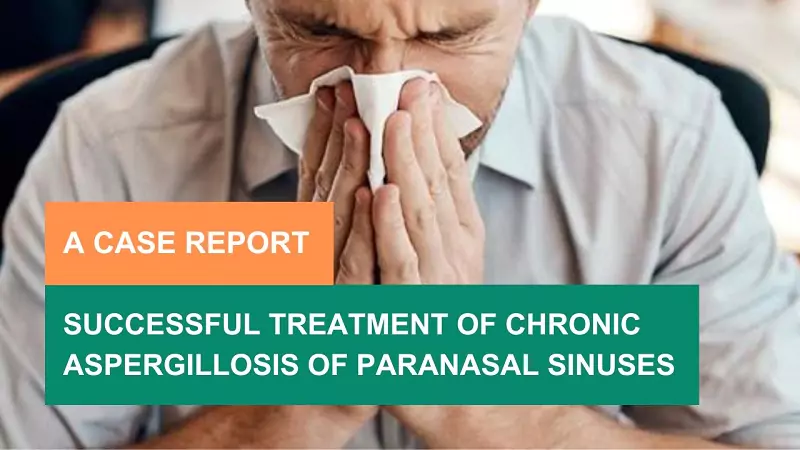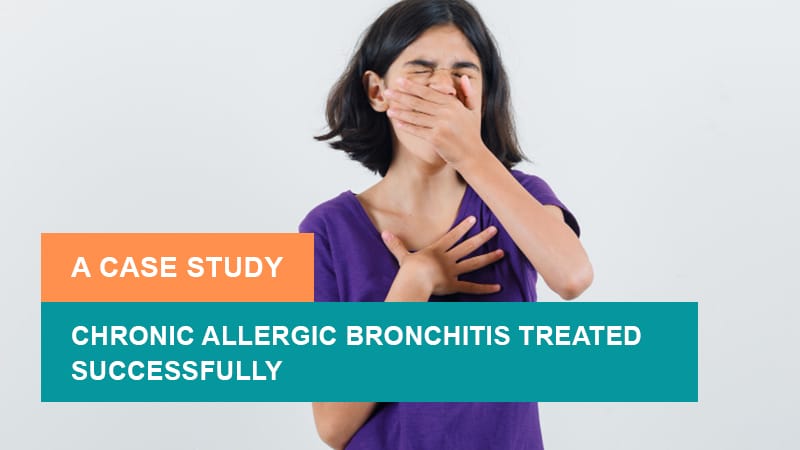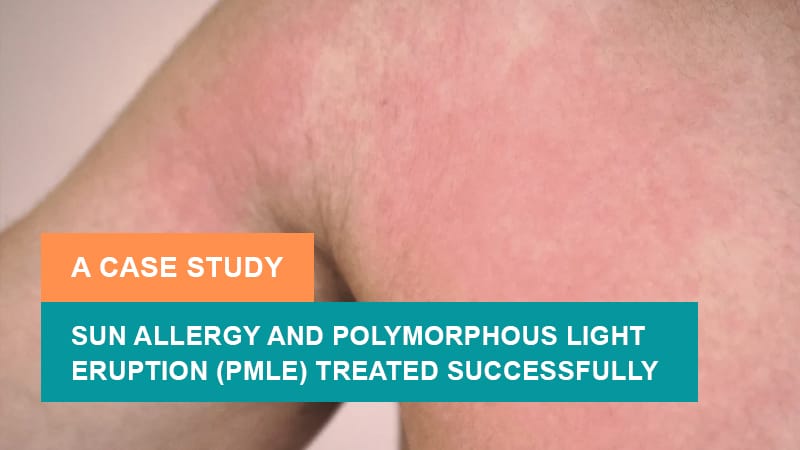Fungal infections can be treated with a high success rate by various Ayurveda treatment measures. Dr. Sahil Gupta the well-known Ayurveda Allergist of IAFA has successfully treated thousands of fungal infection cases. Sinusitis aspergillosis treatment is one among IAFA’s successful Ayurvedic measure which assures complete cure. This blog is a case study of Sinusitis aspergillosis successfully treated by Dr. Sahil Gupta.
Abstract
Sinusitis aspergillosis currently constitutes the most common cause of opportunistic fungus infectious in immunocompromised patients [1]. Any type of paranasal aspergillosis may progress to a more aggressive disease illustrating the importance of early recognition of this increasingly encountered disease. There is no direct correlation for aspergillosis in Ayurveda. On close observation and detailed analysis of the clinical features and upasaya and anupasaya in patients, it can be correlated to dushta pratishyaya (chronic sinusitis) and there is tridosha dushti with kapha predominance which plays a major role in pathophysiology. Therefore the aim of treatment is to remove the dosha dushti, preventing further vitiation and promoting the nourishment of dhathus. The case study being presented is of a 48yr old male patient suffering from aspergillosis. Nasyakarma (installation of medicine through nasal passage) is used as the best choice of treatment along with suitable internal medications. The radiological results revealed the healing process of the soft tissue and there was much symptomatic relief for the patient.
Keywords: Aspergillosis, Dushta Prathishyaya, Nasya
Introduction
The term “Aspergillosis” refers to an illness due to allergy, airway or lung invasion, cutaneous infection, or extrapulmonary dissemination caused by species of Aspergillus. The most frequent site of human infection is the lung. Sinusitis is a common disorder affecting approximately 20% of the population at some time during their lives. Fungal sinusitis constitutes 6-9% of all rhinosinusitis. Aspergillus is the most common fungus affecting paranasal sinuses Worldwide, A. fumigatus is the most common species, followed by A. flavus. The maxillary sinus is the most common sinus to be affected [2].
Fungal infections of the paranasal sinuses need to be recognized in order to avoid significant mortality and morbidity. Diagnosis of paranasal sinus aspergillosis can be made by history, clinical examination, radiography, nasal endoscopy, and additional tests for allergy, aspirin sensitivity, bacteriology, and pulmonary function tests [3].
According to the Ayurvedic perspective, its features can be correlated to Dushta prathishyaya (chronic sinusitis) in which severe headache, nasal obstruction, heaviness, altered olfaction, nasal congestion, mucous production, altered secretion, and blockage are the chief events. Since it is a tridoshaja condition with kapha predominant symptoms, the ayurvedic approach of management is multifaceted and can involve a combination of detoxification processes through samana (palliative) and sodhana (purificatory) mainly using tikshna (sharp), ushna (hot), kaphahara (nature of pacifying kapha) dravyas.
With the objective of understanding the better pathogenesis of the disease, the author presents a case report.
Case Report
A 48 year male patient, visited in OPD on date: 08/8/2019 with the following details:

Figure 1. Extra-oral photograph showing swelling on right side of face
- Patient name: Mr. Surender Singh
- Address: Yamuna Nagar, India
- UID No.:2019/3712
- Date of admission: 26/08/2019
- The patient presented with a history of nasal obstruction, mouth breathing, and snoring, headache, pain, and swelling along the right maxillary region, since 3 months aggravated since 2 weeks. The patient gave a history of scanty seropurulent, odourless nasal discharge from the nasal cavity.
- He denied epistaxis, excessive sneezing, or trauma to the nose. History of recurrent upper respiratory infections including fever, cough, sputum production, ear discharge, earache, tinnitus, vertigo, ataxia and asymmetry of face or facial pain were negative.
- He had no history of tuberculosis, diabetes mellitus, asthma, use of corticosteroids, other immunosuppressants or prolonged antibiotic therapy.
- Vital parameters were normal.
- Examination of Nose revealed deviation of nasal septum to right side.
- Clinical examination of ears and throat was normal,
- Swelling and tenderness were present on right maxillary region.
- NCCT P.N.S imaging (MRI) dated 22/5/2019 revealed right intraorbital and pre / retro antral soft tissue suggestive of right maxillary aspergilloma, mild right maxillary sinusitis, and ‘S’ shaped DNS.
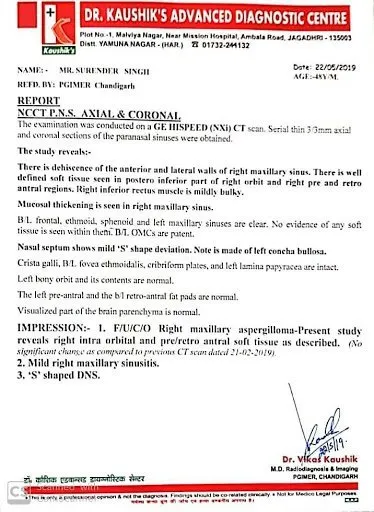
Figure.2 NCCT P.N.S imaging (MRI) Dated 22/5/2019
- Hematological parameters were not suggestive of inflammatory pathology. The kidney function test and liver function tests were normal. Urine did not show any protein or glucose and culture did not show any growth. Blood culture was sterile. Chest X-ray was normal. The patient was presumed to be immunocompetent as the patient was not reactive for HIV and had no diabetes mellitus, neutropenia, evidence of hematologic or any other malignancy in the body, or any concurrent infections.
Ayurvedic Management
Treatment Started Dated on 8/8/2019:-
- Changeri swarasa (Oxalis corniculata) 30ml bd
- Arogyavardhini vati 500mg bd
- Gandhaka rasayana 500mg bd
- Satyanashi swarasa (Argemone mexicana) 60ml bd
- Nasya karma (installation of medicine through nasal passage) with Anu thailam, steam inhalation with neem (Azadirachta Indica) and tulsi (Ocimum sanctum)
Continued till 10/11/ 2019 and again NCCT P.N.S imaging (MRI) was repeated on Dated 14/11/2019 resulted in:-
- F/U/C/O Right maxillary aspergilloma–Present study reveals right intraorbital and pre/retro antral soft tissue described.
- B/L maxillary and right sphenoid mild sinusitis and
- S-shaped DNS noted
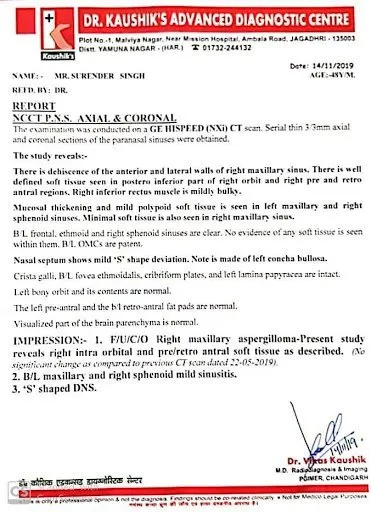
Figure.3 NCCT P.N.S imaging (MRI) Dated 14/11/2019
Treatments Continued Dated on: 22/11/2019:-
- Chrangeri swarasa (Oxalis corniculata) 30ml bd
- Arogyavardhini vati 500mg bd
- Gandhaka rasayana 500mg bd
- Tab Livomyn 500mg bd
- Satyanashi swarasa (Argemone mexicana) 60ml bd
- Nasya karma (installation of medicine through nasal passage) with Anu thailam, steam inhalation with neem (Azadirachta indica), and tulsi (Ocimum sanctum)
- Brahma rasayana 2tsp bd
Treatments again continued Dated on: 22/03/2020:-
- Bhumiamla (Phyllanthus niruri), swaras added and all other same medicines continued
After treatment patient got symptomatic relief in May 2020 and again NCCT P.N.S imaging (MRI) was repeated Dated on 30/05/2020 resulted in:-
- Small well defined lobulated soft tissue along the superior, anterior, and lateral walls of the right maxilla. No interval change is seen as compared to previous CT- s/o healed changes.
- Mild bilateral maxillary and right sphenoidal sinusitis Mild ‘S’shaped DNS.
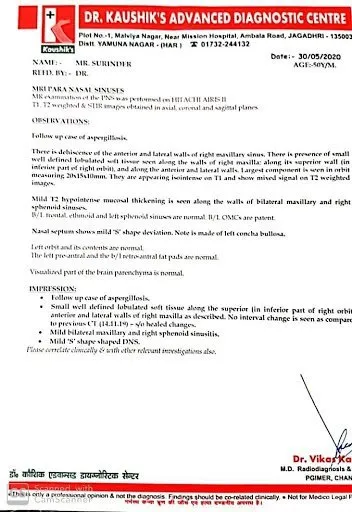
Figure. 4-NCCT P.N.S imaging (MRI) Dated 30/5/2020
On 11/6/2020 treatment continued for a month to attain complete recovery as well as to add rejuvenation. The rejuvenation therapy will guide the process of fast recovery to the internal tissues along with improving the immune system.
- Swarasa of Bhumiamla (Phyllanthus niruri), Tulasi Panchaang (Ocimum sanctum), Aswagandha root (Withania somnifera), Shireesha (Albizia lebbeck), Charngeri (Oxalis corniculata) – each 10ml bd Nasya (installation of medicine through nasal passage) continued.
- Sitopaladi churnam 3g bd
- Abhraka (Mica) bhasma 0.625mg bd
- Yasad (Zinc) bhasma 0.625mg bd
- Steam inhalation with neem (Azadirachta indica) and tulsi arka (Ocimum sanctum).
Discussion
In Ayurveda as Dushta pratishyaya (chronic sinusitis) is a chronic condition of Dosha accumulation in particular nasa (nose) and shira (head); which happens mainly due to sanga (stagnation) type of srothodushti [4]. Oral drug administration like Arogyavardhini vati helped in the actions like pachana (digestive), dipana (enkindles digestion), pathya (wholesome for channel), mala shuddhikari (cleaning of waste materials from body), increase kshudha (appetizer), Sarva roga prashamani helped in reduction of inflammation and infection [5]. Drugs like charngeri (Oxalis corniculata), satyanashi (Argemone mexicana), bhumiamla (Phyllanthus niruri), sireesha (Albizia lebbeck) etc. having pachana (digestive) action helped in relieving nasaavarodha (nasal obstruction) due to oedema and nasasrava (nasal discharge) due to infection and overactivity of mucous secreting glands. When both inflammation and infection are checked; the sinuses get proper drainage and ventilation. As a consequence shirshoola (headache) was reduced.
Anu Taila works as strotoshodhaka (cleansing of channels) due to its katu (pungent), tikta (bitter) rasa, laghu (lightness), ruksha (dry) guna, ushnavirya (hot potency) and katuvipaka (bio-transformative phase of rasa) [6], it possesses a good spreading capacity through minute channels. It increases general and local immunity as it is indriyadardhyakaratva (strength to sense organs), balya (enhance strength), brimhana (improves nourishment), preenana (nurturing body). This immunomodulation will reduce the inflammatory process in the nasal cavity and sinuses. The drug cause local irritation which liquefy purulent discharge and ultimately expelled out. Bacteriostatic property of ingredients will arrest the secondary infection.
Rasayana (rejuvenative) preparations were selected for internal medication, as it is indicated for peenasa (Catarrh) and also having an anti-inflammatory and immunomodulatory effect.
Conclusion
We can conclude that Nasya along with oral medication is effective in the management of aspergillosis which was not much relieved by allopathic medical intervention. After the completion of the initial stage of treatment, the patient must be given Rasayana treatment (rejuvenation measures like intake of Brahma Rasayana, Chyavanprasham, etc.) to improve the immune system.
Ayurveda has its own treatment modalities and Rasayana therapies to increase the immune power of the body and thus avoiding the recurrence of the disease. With the ayurvedic management by Dr. Sahil Gupta at the Institute of Applied Food Allergy®, the patient got relief from the disease and could skip the burden and risks of surgeries.
For the complete cure of any Fungal infections or Allergies, which are having chronic nature can be successfully treated through Ayurveda.
Reach IAFA and feel the difference!!!
References
- Garcia-Reija M, Crespo-Pinilla J, Labayru-Echeverria C, Espeso-Ferrero A, Verrier-Hernandez A. Invasive maxillary aspergillosis: report of a case and review of the literature. Medicina oral. Med Oral 2002;7:200–205. [PubMed] [Google Scholar]
- Sharma D, Mahajan N, Rao S, Khurana N, Jain S. Invasive maxillary aspergillosis masquerading as malignancy in two cases: utility of cytology as a rapid diagnostic tool. J Cytol.2012;29:194–6. [PMC free article] [PubMed] [Google Scholar]
- Singh, N., Bholodia, N.H. 2005. Allergic fungal sinusitis-earlier diagnosis and management. J. Laryngol. Otol., 119: 875 881
- Vagbhata. Ashtanga Hridaya with sarvanga Sundari Arunadatta commentary of Arundatta and Ayurveda Rasayana commentary of Hemadri, Ed.By Pt. Sadashiva Shastri Paradakara. Varanasi; Chaukhamba Surbharati Prakashana; 2007. 293p
- Arogyavardhini Vati Benefits, Uses, Dosage & Side Effects, [Home page on the internet]. Downloaded on 12/09/2016. Available at- https://www.ayurtimes.com
- Agnivesha, Charaka Samhitha, with Hindi Commentary by Pt. Kashinatha Shashtri and Dr. Gorakha Natha Chaturvedi, Varanasi, Chaukhambha Bharti Academy, Reprint, chikitsa sthana, Trimarmiya, verse, 2009; 152: 747.


